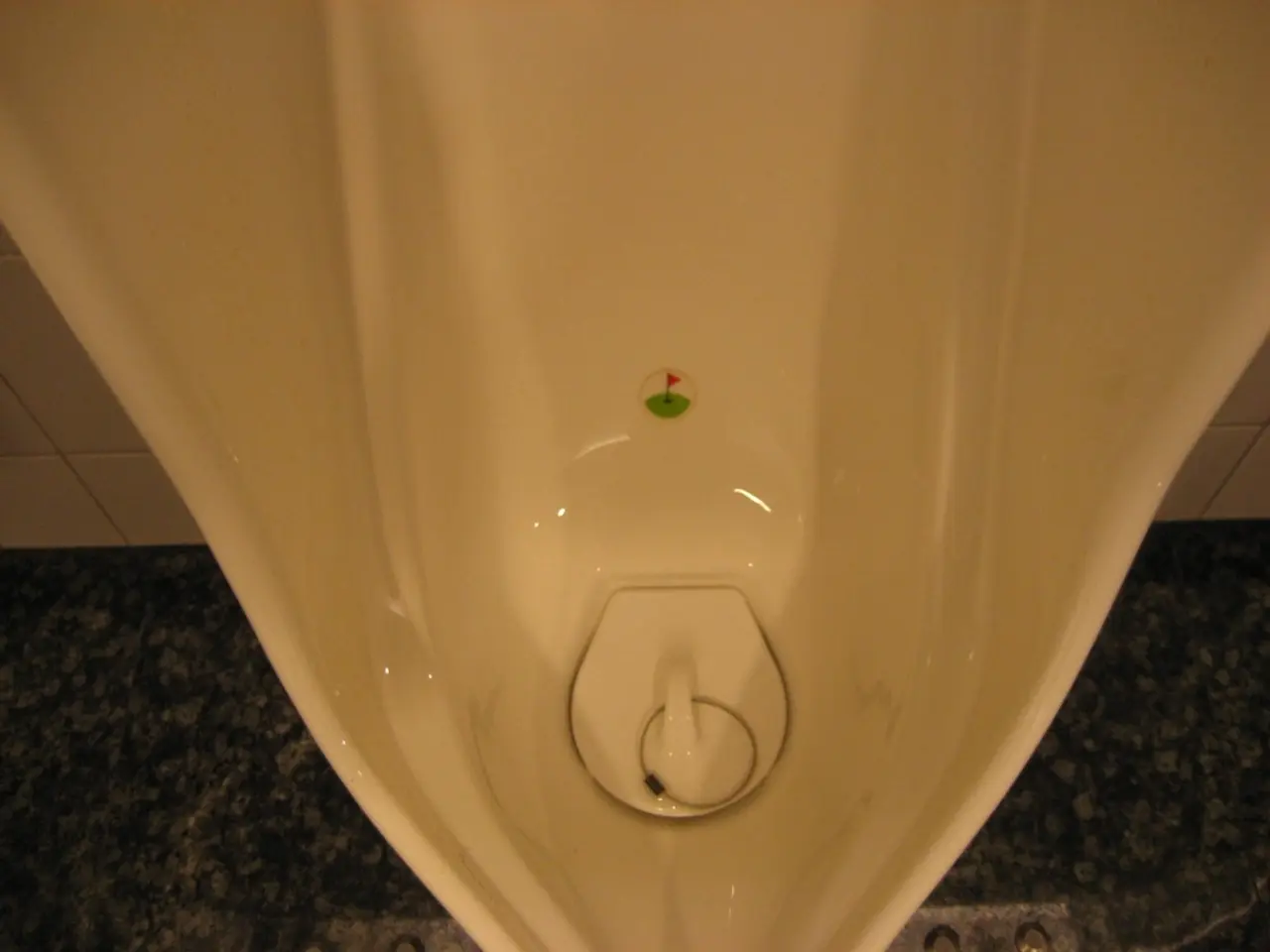Streamlined Process for Sanitizing Urine Collection Devices: Detailed Instructions
The clean catch urine collection method is a standard procedure used to minimize contamination and obtain a reliable urine sample for laboratory testing. This article provides a clear, step-by-step guide for the clean catch urine collection process in adults.
## Steps for Clean Catch Urine Collection in Adults
1. **Prepare Supplies** - Gather a sterile specimen container with a lid, cleansing supplies such as nonsterile gloves, cleansing wipes, or soap and water, and any necessary paperwork like requisition labels or request forms.
2. **Hand Hygiene** - Wash hands thoroughly with soap and water before starting the procedure.
3. **Cleanse the Genital Area** - For men, retract the foreskin if uncircumcised, cleanse the glans with cleansing wipes or soap and water, and allow to dry. - For women, separate the labia, cleanse the urinary opening from front to back with cleansing wipes or soap and water, allowing the area to dry.
4. **Begin Voiding** - Collect the specimen first thing in the morning, if possible. - Begin to urinate into the toilet or urinal, not into the specimen container.
5. **Collect Midstream Urine** - After releasing a small amount of urine, pass the specimen container into the urine stream and collect approximately 30–60 mL of urine. - Do not touch the inside of the container or lid.
6. **Finish Voiding** - Remove the container from the urine stream and finish urinating into the toilet or urinal.
7. **Secure the Sample** - Tighten the lid on the specimen container securely. - Attach the requisition label to the container, place the labeled container with the requisition form in a specimen transport bag if required.
8. **Deliver to the Laboratory** - Transport the urine sample to the laboratory as soon as possible or according to your healthcare provider’s instructions.
It is essential to follow these steps to ensure accurate test results by minimizing contamination from skin or genital bacteria. The clean catch urine collection method is used to prevent contamination of urine samples for testing.
For infants, the Quick-Wee method may be used to stimulate urine production and obtain a clean-catch urine sample. This involves applying gauze soaked in cold sterile saline to stimulate urination. Always choose mild, unscented, colorless, and hypoallergenic soaps for genital washing.
Remember, a clean cup is necessary to collect a urine sample to prevent contamination. After collection, the container should be placed in a tightly sealed biohazard bag, kept cool, and delivered to the lab.
By following these guidelines, you can ensure that your urine sample is collected correctly, leading to more accurate test results.
Research in the field of health and wellness emphasizes the importance of proper urine collection methods, such as the clean catch procedure, to minimize contamination and ensure reliable test results in adults. Following the steps of hand hygiene, cleansing the genital area, and collecting midstream urine are vital aspects of this process.
Incorporating fitness and exercise, skin care, and nutrition into your daily routine may contribute to overall health, which in turn can potentially improve the outcomes of laboratory tests and treatments. For instance, a balanced diet rich in necessary nutrients could help maintain a healthy urinary system, ensuring more accurate test results.
Infants may require a different approach, such as the Quick-Wee method, to stimulate urine production and obtain a clean-catch urine sample. It is important to use mild, unscented, colorless, and hypoallergenic soaps for genital washing during this process.
Adhering to these guidelines can help prevent contamination of urine samples, thus making research and treatment more precise and effective in the future.




